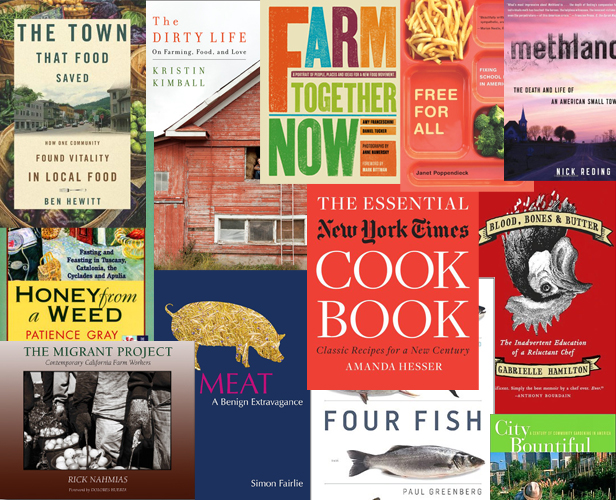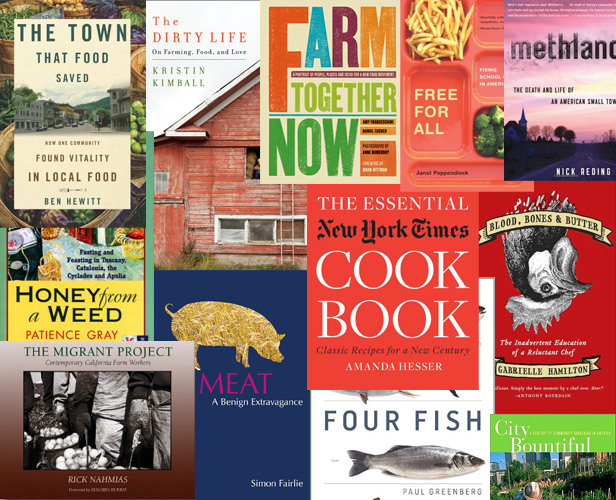 Here at Grist Food virtual headquarters, we were grappling with the obligatory green-holiday-gift-guide pressure, batting around DIY ideas like fruit-infused vodka, home-made granola … you know, virtuous hippie stuff. Then, perhaps like you, we procrastinated, both on this feature and our own gift-making. So on the theory that nothing beats the gift of knowledge, we asked some of our friends in the sustainable-food movement to tell us the best food-related books they read this year. And because used books are greener than new (albeit not for starving authors) we said it didn’t matter what year the book was published, only that our respondents have discovered them in 2010.
Here at Grist Food virtual headquarters, we were grappling with the obligatory green-holiday-gift-guide pressure, batting around DIY ideas like fruit-infused vodka, home-made granola … you know, virtuous hippie stuff. Then, perhaps like you, we procrastinated, both on this feature and our own gift-making. So on the theory that nothing beats the gift of knowledge, we asked some of our friends in the sustainable-food movement to tell us the best food-related books they read this year. And because used books are greener than new (albeit not for starving authors) we said it didn’t matter what year the book was published, only that our respondents have discovered them in 2010.
That’s how we ended up with recommendations for books first published in 1727 and 1973. Which just goes to show that the paradoxes and pleasures of squeezing a living from the land and feeding people in a way that makes sense are nothing new.
Two brand-new books did stand out for a number of our folks: Paul Greenberg’s ultimately hopeful lament for the troubled oceans, Four Fish: The Future of the Last Wild Food; and Jan Poppendick’s Free for All: Fixing School Food in America, a rigorous, highly charged history of public school lunches. Both are very much books of the moment. One of the four fish on which Greenberg focuses, bluefin tuna, is locked in a highly publicized death struggle with overfishing and habitat destruction. If present trends continue, it will be extinct by decade’s end. And Poppendick’s book emerged during Congressional debate over once-every-five-years reauthorization of the Child Nutrition act, which funds lunches. Since the fate of the oceans remains highly uncertain and the state of school lunches highly dismal, we expect that these exhaustively researched and reported books will be relevant for years to come.
You can order these and all the other books through the links below, which (full disclosure) give Grist a tiny kickback from Amazon.com, allowing us to buy yet more books for our own edification. Or, patronize your local, independent bookstore instead … and consider gifting us some actual cash today, the last day of Grist’s fund-raising drive and those endless pop-ups.
Happy reading!
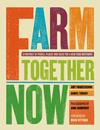
 Michael Pollan
Michael Pollan
Knight Professor of Journalism at UC Berkeley’s Graduate School of Journalism and author of Food Rules: An Eater’s Manual and other books
My favorite book of the season is Farm Together Now: A Portrait of People, Places, and Ideas for a New Food Movement, by Amy Franceschini and Daniel Tucker. It consists of interviews with a wide range of farmers (and activists) who you haven’t heard of. Inspiring without being romantic in the least, it advances the whole conversation about sustainable agriculture and access.
 Ruth Reichl
Ruth Reichl
Former editor-in-chief of Gourmet and author of Not Becoming My Mother and other books
I’ve been agonizing between Paul Greenberg’s Four Fish: The Future of the Last Wild Food and Gabrielle Hamilton’s forthcoming Blood, Bones and Butter: The Inadvertent Education of a Reluctant Chef. And in the end I’m coming down to Hamilton’s book. Why? For one thing, because she’s an astonishingly good writer; her description of being on the line during brunch at Prune is so strong and visceral — I’ve never read a better account of what it’s like to be working in a really busy kitchen. But that’s just a piece of it. More importantly, this is an entirely new voice. Everything we’ve read about professional kitchen work has come from men, and it’s all been testosterone-laced. This is a woman’s voice — a young woman’s voice — and it feels like a sea change. Because this is a woman who loves food but is not sentimental. A woman who lets us into the intimate details of her life while skirting the romance that almost anyone else would include. A woman who rhapsodizes about the sheer grit and grunge of the kitchen. A woman for whom cooking is its own end, not a road to success. And, of course, it’s great fun to read.

 Tom Philpott
Tom Philpott
Grist senior food and agriculture writer
Four Fish may be the food politics book of the year; but that doesn’t mean it’s the only book to seek out. I’m eagerly reading UK farmer/writer Simon Fairlie’s Meat: A Benign Extravagance. (Chelsea Green has just come out with the U.S. edition.) This is the book that inspired the formidable UK environmentalist George Monbiot to give up veganism and give meat another chance — so long as the animals are raised and consumed according to permacultural principles. Fairlie writes briskly and has a commanding grasp of the history and ecological footprint of agriculture. But don’t expect Pollan-esque narratives; more like learned, stylish legal briefs that encompass the range of contradictions, benefits, and drawbacks of livestock-raising.
I also want to put in a plug for three non-food books that have been shaping my thinking around food-system reform. The first two, both released in 2010, offer defenses of robust social democracy at a time when Democrats and Republicans alike are committed to the Wall Street economic agenda: Tony Judt’s Ill Fares the Land and Richard Wilkinson and Kate Pickett’s The Spirit Level: Why Greater Equality Makes Economies Stronger. (Go here for a taste of The Spirit Level’s extraordinary charts
.) The third, from way back in 1973, makes the case against economic giantism and for appropriate technologies that empower communities: E.F. Shumacher’s Small Is Beautiful: Economics as if People Mattered. If I am correct that we cannot truly reform our food system without rejiggering the broader economy, then these three books help sketch out a framework.
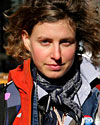
 Severine von Tscharner Fleming
Severine von Tscharner Fleming
Young-farmer activist and filmmaker, The Greenhorns
The Dirty Life by Kristin Kimball, which just came out. And man, never was there ever a slam-dunkier, farm-hunkier novel for cosy Christmas reading. Kristin tells how she quit her office job to marry a farmer with luscious foodie detail, sparing us none of the guts and glory. She and her husband, Mark, run Essex Farm, a farm so full on and radical in its approach (a take-what-you-need CSA of beef, pork, flour, beans, vegetables, syrup, and milk) on 500 lakeside, windswept horse-powered acres — it makes the rest of us seem very sensible in comparison.
This is a great read for all those food-loving, food-systems-literate, ambitious, brilliant women who’re working desk jobs but day-dreaming about a pastoral future as well as for moms of young farmers who’re still trying to process their children’s career choice. It’s very post-Pollan with totally authentic, value-added, community-oriented ninja farming front and center.
And ladies, know this: there are PLENTY of good-looking young farmer menfolk. They are often to be found at a young farmers’ mixer near you, drinking beer and hanging out with other greenhorns. So come, join in.. and be ready to get serious. Make it real. Make it happen, give it a try.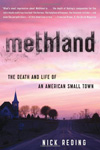
 Greg Massa
Greg Massa
Farmer (rice, almonds, and wheat), Massa Organics, and tractor-Tweeter/Facebooker
This is probably a different sort of book than your other contributors have suggested, but for me the book of the year was Methland: The Death and Life of an American Small Town by Nick Reding. Those of us who live and work in supposedly “idyllic” rural America deal with the effects of meth almost daily. For example, a few years ago when our house was burglarized the first time, it was by hungry, broke tweakers. Big Ag has played a role in creating the meth problem in America, from the nitrogen fertilizers used in meth production to the consolidation of the meat-packing industry that exploits its workers. This book connects the dots between Big Ag, Big Pharma, and America’s meth epidemic.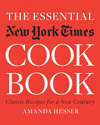
 Ruth Bourdain
Ruth Bourdain
Ruth Reichl eats Anthony Bourdain, s/he can be followed on Twitter and writes for Chow
Not only is Amanda Hesser’s The Essential New York Times Cookbook an amazing compendium of recipes from one of the best food writers out there, it also makes for a fucking fantastic doorstop. I love using it to pound camel loin filets, it works great for step aerobics, and it’s a motherfucker of a panini press. You can also tear out the vegetable recipe pages and use them as rolling papers. It’s one of the most versatile cookbooks I’ve owned.

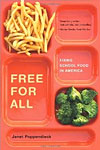 Mark Winne
Mark Winne
Author of Food Rebels, Guerrilla Gardeners, and Smart-Cookin’ Mamas and Closing the Food Gap and more
Janet Poppendieck’s Free For All: Fixing School Food in America gives you the real skinny on why school kids are getting fat. It’s at the top of my food-book gift list this year. In her thoughtful and readable treatise on a system that serves (barely) 30 million children each day, Poppendieck takes us on a tour of schools, cafeterias, and the sordid history of school food whose culinary reviews rarely surpass those given to pet food. Her solutions are bold, provocative, and by her own admission, not likely to get much political traction, but the clarion call of today’s rebels will more than likely be tomorrow’s everyday speech.

 Nikki Henderson
Nikki Henderson
Executive director of People’s Grocery, Oakland, Calif.
Eric Holt-Gimenez and Raj Patel’s Food Rebellions is probably one of the best books I’ve read about food. It’s not a feel-good narrative read, if that’s what you’re looking for. I needed a thick, meaty, full of information read. I needed a book that would give me an in-depth understanding of the 2008 food crisis, globalized food, and why sustainable agriculture can actually feed the world. It might take you a while to work your way through (it’s very dense), but it’s worth the time!
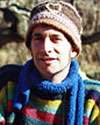
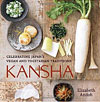 Sandor Katz
Sandor Katz
Author of The Revolution Will Not Be Microwav
ed and Wild Fermentation
This year I’ve been so immersed in my own book project [an in-depth guide to fermentation due from Chelsea Green in 2012) that every food-related book I’ve read has been on the topic of fermentation. And most aren’t new. For instance, I just read the extensive section on sorghum beers in Hamid Dirar’s 1993 The Indigenous Fermented Foods of the Sudan, an amazing opus chock full of fermentation techniques and socio-economic analysis. Of the food books published this year that I’ve read, my favorite two are Ken Albala and Rosanna Nafziger’s The Lost Art of Real Cooking and Elizabeth Andoh’s Kansha, on Japanese vegetarian dishes, which has a wonderful section on tsukemono, Japan’s extremely diverse pickling tradition.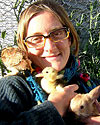
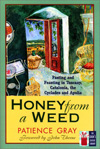 Novella Carpenter
Novella Carpenter
Oakland urban farmer and author of Farm City
This is pretty random, but my favorite discovery of 2010 is a book called Honey From a Weed by Patience Gray, published by North Point Press in 1990. The subtitle is “fasting and feasting in Tuscany, Catalonia, the Cyclades and Apulia,” but it isn’t a gourmet travel and eating book, it’s a love song to ingredients and a way of life that is almost dead. The author mixes culinary history with amazingly delicious recipes that have stories attached to them. The writing makes for pure pleasure reading, which I am a loathe to admit is my penchant these days. But at the heart of this book is a deep thought: “Once we lose touch with the spendthrift aspect of nature’s provisions epitomized in the raising of a crop, we are in danger of losing touch with life itself.” Beautiful stuff! 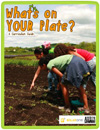
 Anna Lappe
Anna Lappe
Author of Diet for a Hot Planet
What’s On Your Plate? That’s definitely a question more and more of us are asking ourselves these days, and in this film and just-published companion book, two intrepid young New Yorkers set about answering it. The film chronicles the girls’ travels from the streets of New York to farms upstate, and unfolds as the kids learn to ask the tough questions about why some of us eat so well while others struggle to eat at all; and why food is grown with toxic chemicals and shipped thousands of miles, while farmers just a few hundred miles from the city struggle to find markets for their products. The book includes recipes, activities to sharpen those critical-thinking skills, and other fun elements for kids and those young at heart. Get the book and film together, and give as a holiday gift along with a tasty home-cooked meal, or make a viewing of it a fun family activity.

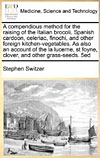 Eliot Coleman
Eliot Coleman
Farmer, Four Season Farm, and author most recently of The Winter Harvest Handbook
As a confirmed old-book nerd, my “new” book recommendations are going to be old ones that I’ve just recently discovered. My favorite this year was first printed in 1727, The Practical Kitchen Gardiner (subtitled “Or, a new and entire system of directions for his employment in the melonry, kitchen-garden, and potagery, in the several seasons of the year. . . . The whole methodiz’d and improv’d”), by Stephen Switzer. Tips on growing cucumbers in March and snap beans in April from hotbeds, plus fascinating details on every vegetable, combine to convince the reader that gardening has been universal since we left Eden and that there is nothing new under the sun. This old book and many others are available from Gale ECCO Print Editions in a scanned, print-on-demand version of the original. Once you get used to the long, skinny 18th century “s” that looks like an “f,” reading the text is easy. This is a quality, nicely bound and printed book, unlike many of the fly-by night on-demand companies which send out cheap poorly scanned copies.

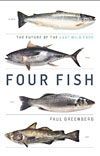 Ann Cooper
Ann Cooper
Renegade Lunch Lady and author of Lunch Lessons and other books
Four Fish: The Future of the Last Wild Food is not only a great read, but a must-read for all of us who care about sustainability of the food supply, the ocean and the wild animals that we’re harvesting from it. And in Free For All, Jan Poppendick takes us on an historical and contemporary perspective of school food in America. She explains not only how we got to “bad” food in schools, but suggests how we can change that paradigm: free lunch for all! I also liked Diet for a Hot Planet, Food Rules, and (sort of out of context) The Last Chinese Chef, a 2007 novel.
 Barry Estabrook
Barry Estabrook
Former contributing editor at Gourmet, blogger at Politics of the Plate
Just when you thought
that the last word had been written and rewritten about all things local, seasonal, and sustainable, in The Town That Food Saved: How One Community Found Vitality in Local Food, Ben Hewitt not only tells how one small Vermont town was revived by small farmers and food processors, but shows how our broken national food system can be saved, too. And in Four Fish, Paul Greenberg provides a blueprint for how the world’s fisheries can be managed in an ecologically sound manner.
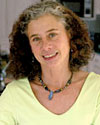
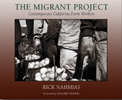 Darra Goldstein
Darra Goldstein
Editor, Gastronomica
After visiting the Cesar Chavez Foundation this summer, I was prompted to take another look at Rick Nahmias’s stirring photographs, published as The Migrant Project: Contemporary California Farm Workers. These beautiful sepia-toned prints document intimate moments in the lives of the marginalized workers who labor to put food on our tables. Each photograph is accompanied by a descriptive text; essays and oral histories place the images in historical context. This is a gorgeous and important book. [Editor’s Note: Grist will be running a slideshow from this project in conjunction with our California series debuting in January.]

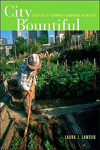 Daniel Bowman Simon
Daniel Bowman Simon
Gardener, currently advocating for a vegetable garden to be planted right in front of New York’s City Hall
Most people know about the Victory Gardens of World War II. But this is only a small part of the story. Laura Lawson’s City Bountiful: A Century of Community Gardening in America tells the uplifting true story of everyday people cultivating the land for food in wartime and peacetime, growing kale and jalapeños in vacant lots, in schoolyards, and in places you’d never imagine.
It was thanks to Lawson’s book that I discovered the 1910 book Children’s Gardens for Pleasure, Health and Education by Henry Parsons, whose mother, Fannie, founded DeWitt Clinton Farm School, New York City’s first youth educational farm. Parsons discusses issues ranging from soil erosion to seed selection. The black-and-white photos of kids and their veggies are captivating. For modern-day advocates, the historical perspective offers hope and guidance. I got my hands on an original from a used bookstore on Cape Cod, but thanks to Google Books, the full text is available as a dust-free PDF download.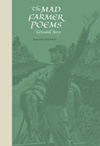
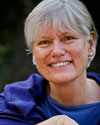 Claire Hope Cummings
Claire Hope Cummings
Author of Uncertain Peril, working on a book about finding our way forward in a climate-ravaged world
Lately I’ve been relishing the amazing accomplishments of our food movement. My farmers market is full of local produce, wild fish, and artisan cheese and bread. Supermarkets now stock organic food. Kids can get healthy food in their schools.
At its heart, this work has always been about the farmers. They took the big risks, figuring out how to produce and market food without artificial chemicals. And they always understood that this was as much a political movement as an environmental one. No one captures the spirit of the citizen farmer better than Wendell Berry. For the last 40 years he has put into words what we know in our hearts to be true and he makes us glad of the work we have done. So, having recently sorted through my collection of food and agriculture books, the one I most recommend is a collection of Berry’s Mad Farmer Poems — which he began writing in 1967, beautifully rendered with engravings.
To savor his voice, during this season of reflection and celebration, is to know what sanity truly means. An excerpt:
Come into the life of the body, the only body
granted to you in all the history of time.
Come into the body’s economy, its daily work,
and its replenishment at mealtimes and at night.
Come into the body’s thanksgiving, when it knows
and acknowledges itself a living soul.
Come into the dance of community, joined
in a circle, hand in hand, the dance of the eternal
love of women and men for one another
and of neighbors and friends for one another.

